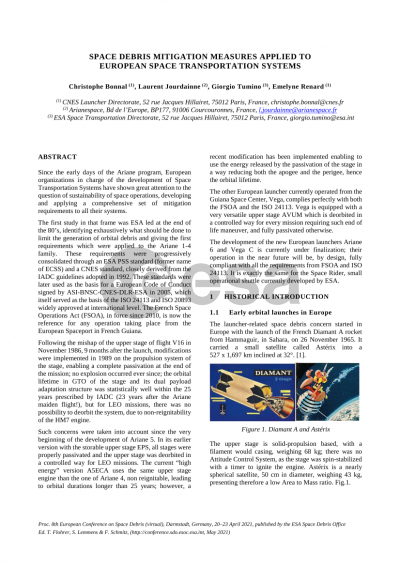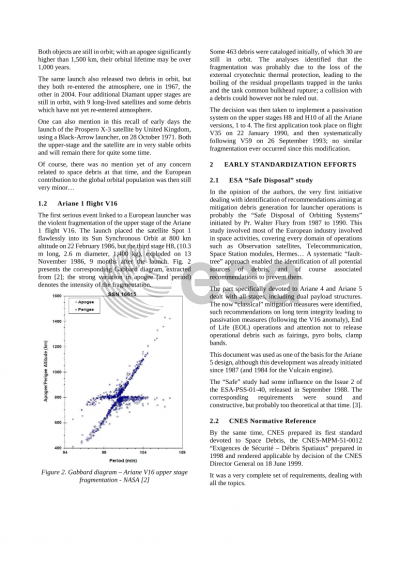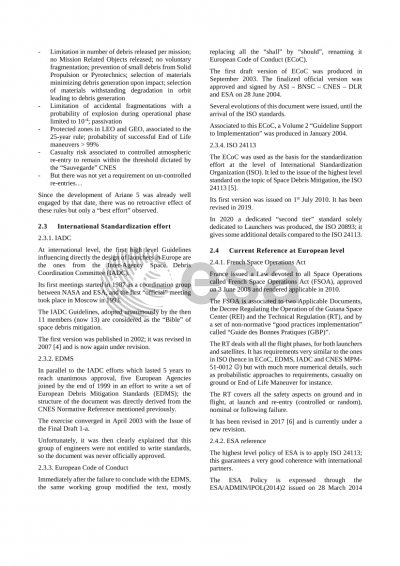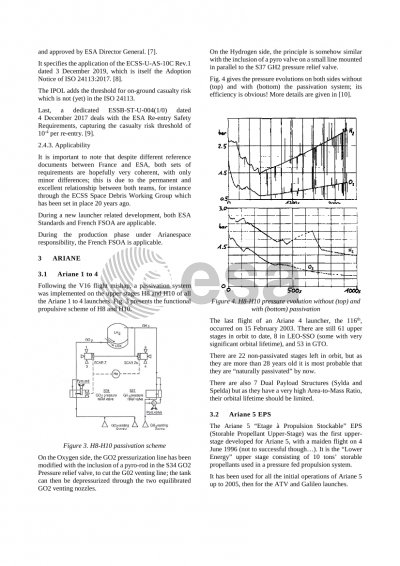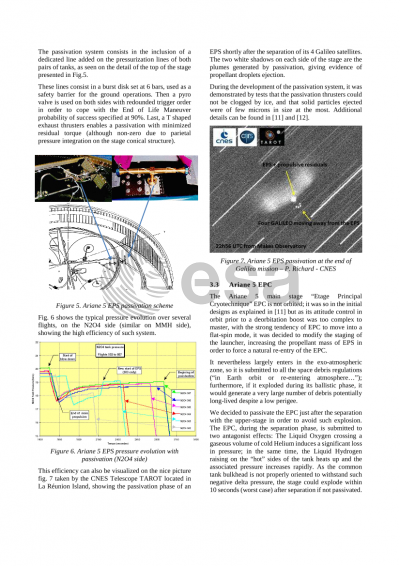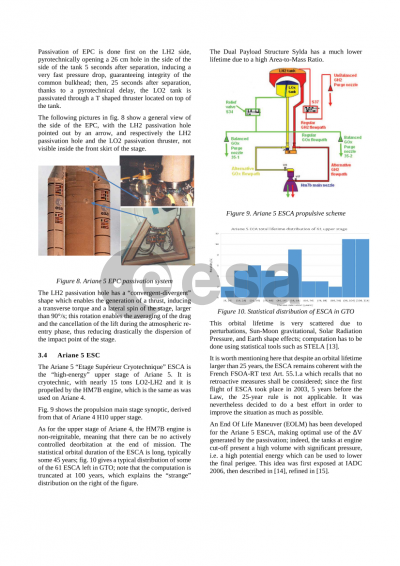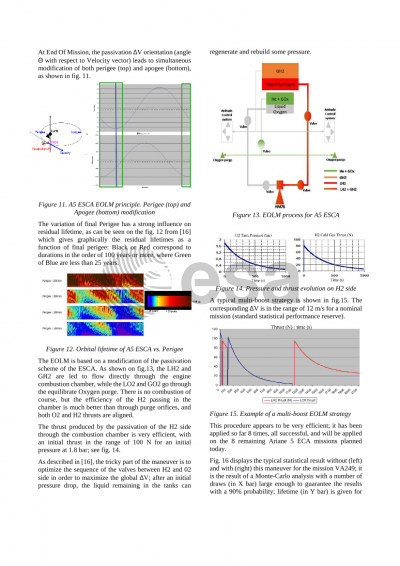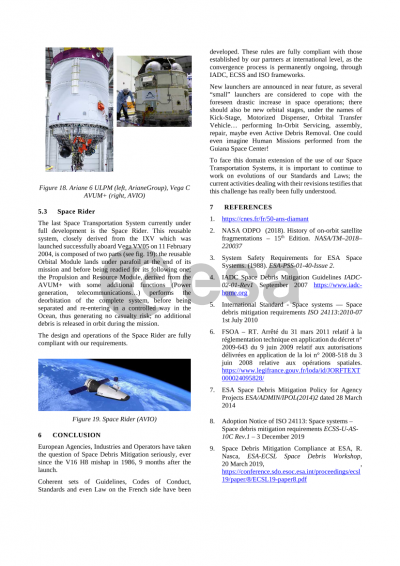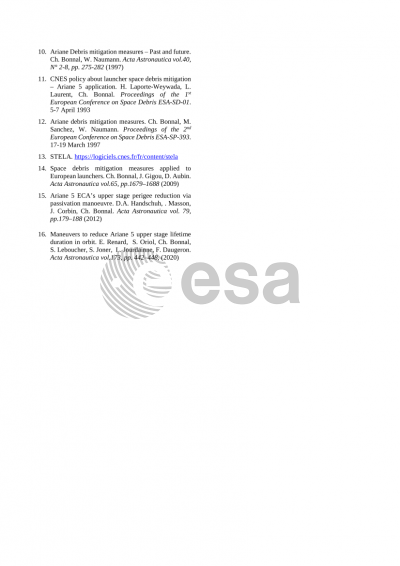Document details

Abstract
Since the early days of the Ariane program, European organizations in charge of the development of Space Transportation Systems have shown great attention to the question of sustainability of space operations, developing and applying a comprehensive set of mitigation requirements to all their systems.
The first study in that frame was ESA led at the end of the 80’s, identifying exhaustively what should be done to limit the generation of orbital debris and giving the first requirements which were applied to the Ariane 1-4 family. These requirements were progressively consolidated through an ESA PSS standard (former name of ECSS) and a CNES standard, closely derived from the IADC guidelines adopted in 1992. These standards were later used as the basis for a European Code of Conduct signed by ASI-BNSC-CNES-DLR-ESA in 2005, which itself served as the basis of the ISO 24113 and ISO 20893 widely approved at international level. The French Space Operations Act (FSOA), in force since 2010, is now the reference for any operation taking place from the European Spaceport in French Guiana.
Following the mishap of the upper stage of flight V16 in November 1986, 9 months after the launch, modifications were implemented in 1989 on the propulsion system of the stage, enabling a complete passivation at the end of the mission; no explosion occurred ever since; the orbital lifetime in GTO of the stage and its dual payload adaptation structure was statistically well within the 25 years prescribed by IADC (23 years after the Ariane maiden flight!), but for LEO missions, there was no possibility to deorbit the system, due to non-reignitability of the HM7 engine.
Such concerns were taken into account since the very beginning of the development of Ariane 5. In its earlier version with the storable upper stage EPS, all stages were properly passivated and the upper stage was deorbited in a controlled way for LEO missions. The current “high energy” version A5ECA uses the same upper stage engine than the one of Ariane 4, non reignitable, leading to orbital durations longer than 25 years; however, a recent modification has been implemented enabling to use the energy released by the passivation of the stage in a way reducing both the apogee and the perigee, hence the orbital lifetime.
The two other launchers currently operated at the European Space Port do comply perfectly with both the FSOA and the ISO 24113. Vega is equipped with a very versatile upper stage AVUM which is deorbited in a controlled way for most missions, and fully passivated otherwise. The upper stage Fregat of Soyuz also performs a direct reentry for missions requiring it, and has been modified to implement a full passivation system.
The development of the new European launchers Ariane 6 and Vega C is currently under finalization; their operation in the near future will be, by design, fully compliant with all the requirements from FSOA and ISO 24113. It is exactly the same for the Space Rider, small operational shuttle currently developed by ESA.
Last, some micro-launchers are under development in various countries in Europe. Some plan to be launched from the Guiana Space Center, in which case they will by definition, have to be compliant with the FSOA; those launched from elsewhere will have to cope with the ad-hoc “approving agents” as identified in the ISO-24113, for instance DLR whose standard is perfectly in line with ISO, thus guaranteeing future European space operations totally in line with the sustainability of orbital environment.
Preview
